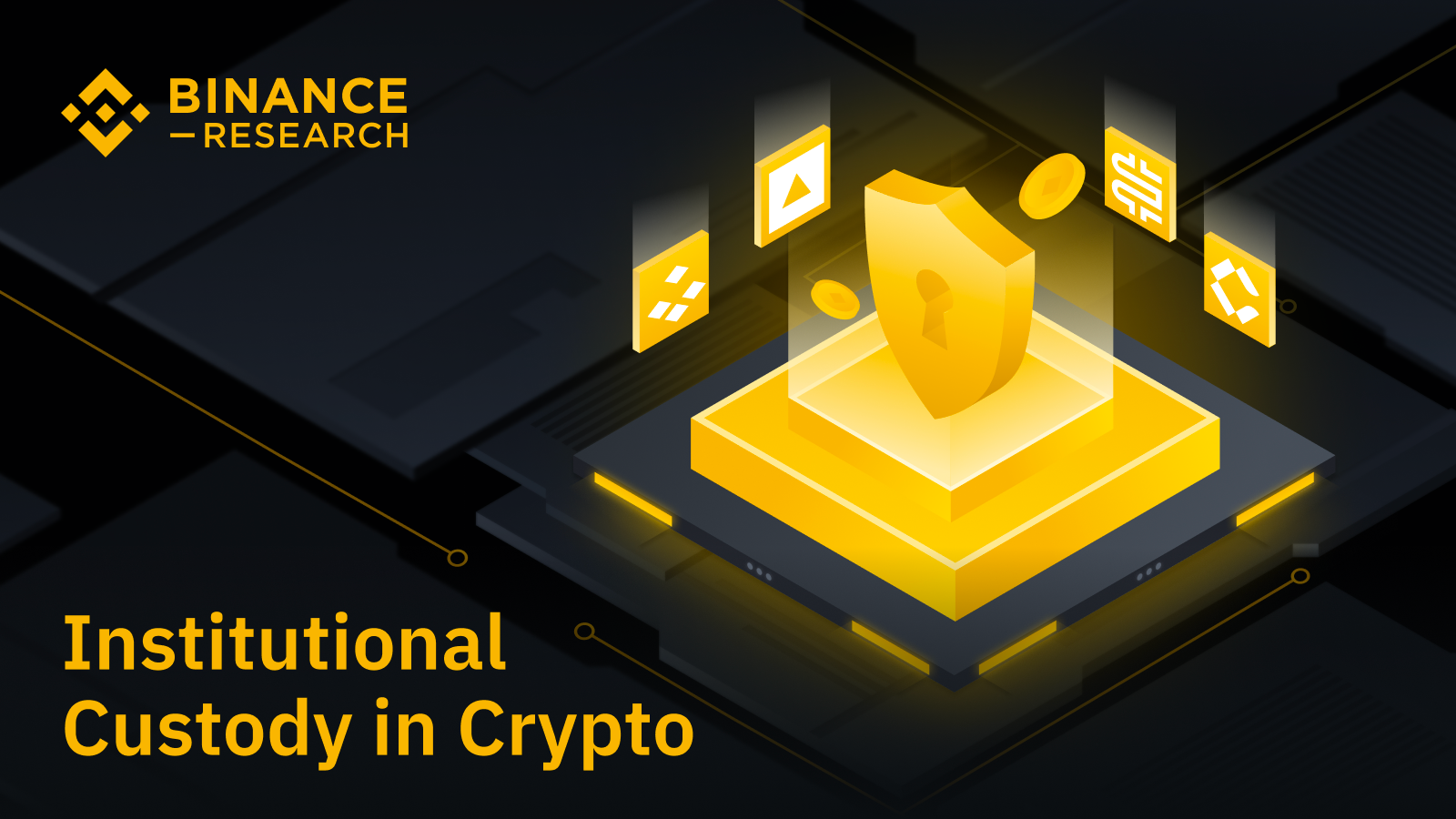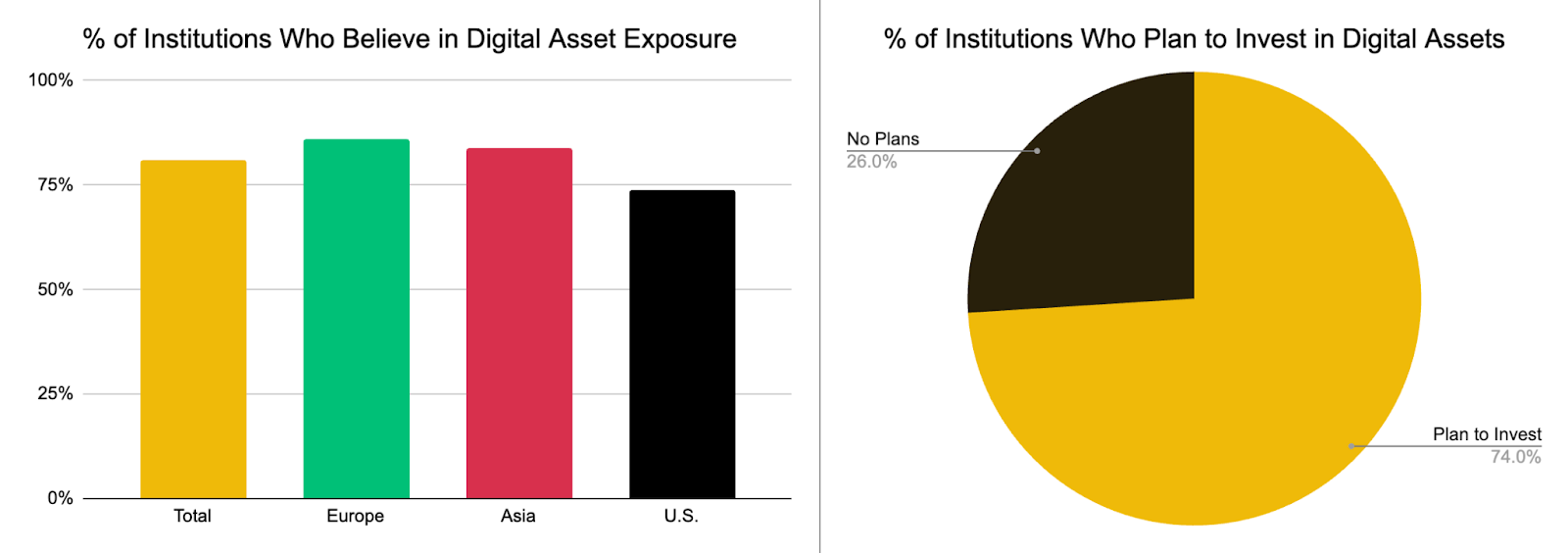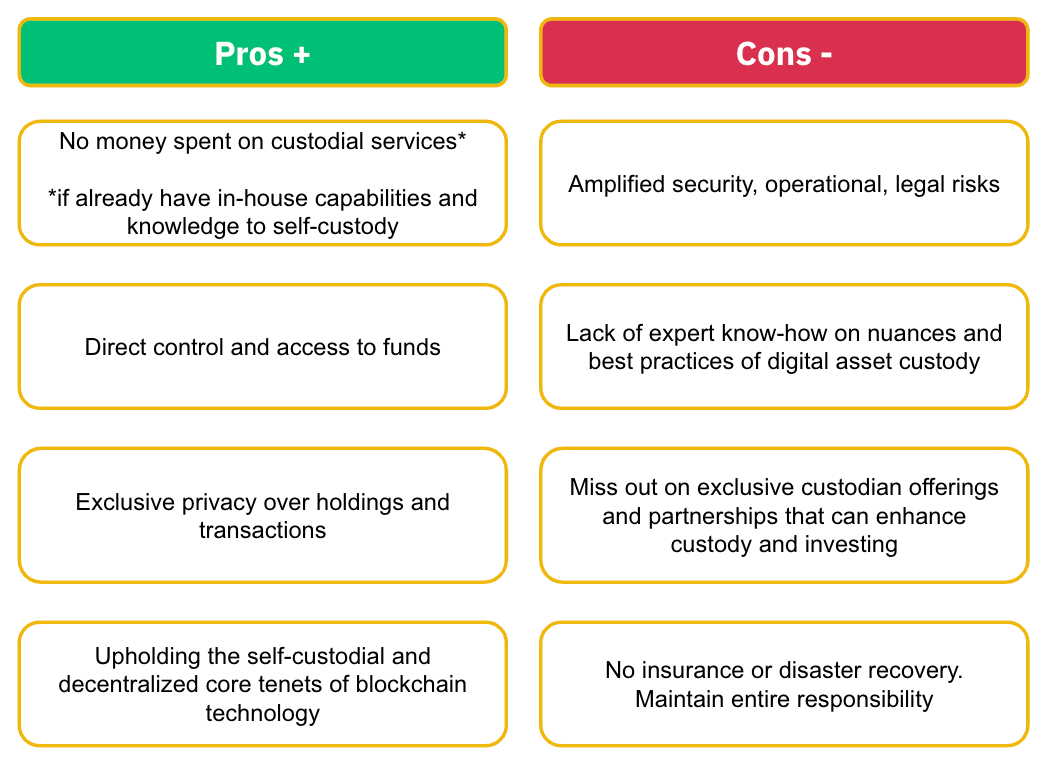Binance Research: Institutional Custody in Crypto – Key Insights and Enterprise Solutions
Main Takeaways
In this blog series, we offer concise summaries of Binance Research team’s findings, inviting you to take a deeper dive into the original reports.
The latest article previews the recent Binance Research report discussing the current state of institutional custody in crypto.
Institutional custodians are those who hold assets in custody for institutional clients. While they share similarities with exchanges, each serves a distinct role in the crypto ecosystem.
Thanks to Binance Research, you can take advantage of industry-grade analyses of the processes that shape what the Web3 space will look like tomorrow. By sharing these insights, we hope to empower our community with the latest knowledge from the field of crypto research. For a deeper dive, the full reports are available on the Binance Research website.

Institutional custodians are the service providers that hold custody of assets for clients, much like banks, fund managers, and other institutional-scale entities. Their main focus is on optimizing for asset security and protection. The crypto ecosystem hasn’t always accepted institutional custodians: many see such custodial offerings as risky and contradictory to blockchain’s ethos of decentralization.
Binance Research’s recent report explores the current state of institutional custody in crypto. This article previews that report, discussing the background of institutional custody before examining its role in the crypto ecosystem, how it differs from self-custody, and key trends to watch in the future.
Institutional Investment in Crypto
With the growth of crypto, financial institutions worldwide have shown their willingness to invest in the novel asset class. A global study from Fidelity in late 2022 surveyed over 1,000 institutional investors across Europe, Asia, and the US, showing that 81% of them believe crypto should be a part of an institutional portfolio. Furthermore, 74% of the respondents reported having plans to invest in digital assets.
Institutions are expressing a willingness to invest in digital assets
Source: Fidelity, Binance Research
This welcoming stance toward crypto has been driven by client demand and a desire to engage with the innovations of blockchain technology. Institutional-grade custodians have emerged to accommodate the anticipated flow of institutional capital into crypto. However, given the importance of decentralization in the blockchain space, the crypto ecosystem has been divided on the emergence of a class of professional custodians whose job is to consolidate large amounts of digital assets.
Institutional Custodians in Crypto
In response to the concerns mentioned above, institutional custodians have tried to differentiate themselves by redefining what custodianship means within the crypto space. Now more than ever, institutional custodians are addressing public scrutiny by offering innovative technological solutions. Furthermore, they are evolving to cater to the range of institutions’ risk preferences and investing styles.
Institutional custodians help provide the peace of mind that many professional investors require to be able to take their first steps in the world of digital assets. As such, they play a vital role in attracting institutional capital to crypto and thus helping develop the industry. The services they offer include not only custody but also trading, staking, insurance, audits, escrow, accounting, research, and more.
How institutional custodians are embedded into the crypto ecosystem
Source: Blockdata, Binance Research
Like exchanges, institutional custodians are embedded into the intermediary layer of the crypto ecosystem, where investment capital flows through to blockchain networks. While exchanges and institutional custodians may perform intermediary functions, their roles in the crypto ecosystem are distinct.
Institutional custodians vs. exchanges
Institutions typically face a trade-off between convenience and security. They can choose to onboard into crypto through an exchange or through a specialized institutional custodian. Depending on the institution and its needs, these considerations will determine which service they choose to onboard through.
Crypto exchanges serve to facilitate trading. They may also offer custody or other services on top of that, which many do. While it may be convenient to have trading and custody infrastructures in the same place, this also makes exchanges more attractive and vulnerable to hackers. Furthermore, verifying whether exchanges keep the assets in cold storage remains challenging.
Conversely, safekeeping assets is the primary service institutional custodians provide to the crypto ecosystem. They are, first and foremost, focused on optimizing for security rather than convenience. Again, additional offerings may be provided as ancillary services, but the primary function is custody.
Institutional custodians are evolving to provide similar offerings as traditional brokerage services. Traditional finance (TradFi) custodians are beginning to enter the crypto custody space to compete with their crypto-native counterparts. As crypto regulation continues to develop and the rules for various kinds of crypto-related activity appear, custodians will also be impacted.
Self-Custody vs. Institutional Custody
On January 3, 2009, the first block – or “genesis block” – on the Bitcoin blockchain was mined by Satoshi Nakamoto, the first cryptocurrency’s pseudonymous creator. Embedded into the metadata was a short quote:
“Chancellor on brink of second bailout for banks.”
While referencing the 2008 banking crisis that led many of the world’s largest custodians to lose their customers’ assets, the quote reveals one of blockchain’s driving forces. Satoshi envisioned a payment system that would not rely on centralized custodians but would allow users to self-custody their own assets.
Risks of self-custody
The notion of self-custody is powerful, especially for individual investors. However, self-custody also comes with a number of security, operational, and legal risks.
Risks associated with self-custody
Source: Binance Research
The risks associated with self-custody are amplified for institutions. Their role is to manage large amounts of capital and serve as fiduciaries for their clients. Institutions are accountable not only for their own assets but also for the assets of others. Furthermore, the capital that institutions are managing is often levels of magnitude greater than most individual investors.
As such, self-custody for institutions involves amplified security, operational, and legal risks. They can choose to face these risks and custody their own funds or outsource this job to a professional custodian.
Pros and cons of self-custody for institutions
Before deciding how to store crypto, institutions should be aware of the pros and cons of self-custody. Institutions can benefit from self-custody with reduced costs, increased control, and superior decentralization. However, there are numerous disadvantages that institutions should also consider.
Pros and cons for institutions considering self-custody
Source: Binance Research
The weight of these will vary for each institution. For some, the cons of self-custody will clearly outweigh the pros. In these cases, institutions will often elect to utilize the services of an institutional custodian.
Institutional custodians apply established best practices to manage institutional assets. Additionally, institutional custodians may offer other exclusive benefits that the institution can use to enhance its custodial and investing processes.
Key Trends to Watch
As the industry matures, here are some key trends to keep an eye on.
Trading and asset offering
Institutional custodians are starting to look like TradFi prime brokerages. Institutional custodian offerings are no longer limited to custody but include numerous other services. Over time, as crypto becomes more financialized and institutions develop more ways to leverage this new asset class, institutional custodians will increasingly need to provide prime brokerage-like offerings and meet demand head-on.
Regulation
Institutional custody regulations are evolving in many jurisdictions. Most recently, on May 16, 2023, the Council of the European Union adopted Markets in Crypto Assets (MiCA) regulation, making the EU the first major jurisdiction with a crypto licensing regime. MiCA takes a page from the existing client asset rulebook while adding new, explicit requirements for crypto institutional custodians.
Over time, further regulatory developments will help clarify the standard practice. This is a critical theme to watch as many institutional investors are demanding regulatory clarity before allocating their assets to institutional custodians.
TradFi competition
As regulatory environments become clearer and institutional clients demand exposure to crypto assets, established TradFi custodians have begun offering crypto custody. In the future, TradFi custodians will continue to enter the institutional custody space.
Crypto-native service providers will have to compete with traditional custodians’ established reputations and, typically, outcompeting assets under management. Furthermore, institutions have been shown to prefer TradFi custodians, with many indicating that they would be more likely to increase their crypto exposure if they could do so via a highly-rated, established financial institution. As TradFi custodians continue to emerge in the digital asset space, crypto-native custodians will face further competition.
Closing Thoughts
The institutional custody industry is rapidly evolving, attempting to keep pace with the growing demand from institutions seeking exposure to crypto. Institutional custodians are creating innovative offerings tailored to institutions’ preferences and redefining custodianship in crypto. As awareness of blockchain technology and cryptocurrencies grows, the role of institutional custodians becomes increasingly essential.
Institutions will continue to look for solutions that ensure the safety of their assets. Furthermore, they will want to engage with the innovations of blockchain technology. Custodians will be vital in offering the peace of mind many financial firms require to invest in crypto. Ultimately, institutional capital and their custodial counterparts will help blockchain technology to mature, develop, and achieve greater adoption.
Binance Research
The Binance Research team is committed to delivering objective, independent, and comprehensive analyses of the crypto space. They publish insightful takes on Web3 topics, including, but not limited to, the crypto ecosystem, blockchain technologies, and the latest market trends.
This article is only a snapshot of the full report, which contains further analysis of the institutional custody sector and features an industry map. It also offers key charts and figures helpful for understanding the context, describes different types of institutional custodians and services they offer, and much more. With such rich content, you won’t want to miss these exclusive insights.
To read the full version of this report, click here. You can find other in-depth investigations of the latest Web3 developments by visiting the Insights & Analysis page on the Binance Research website. Don’t miss the opportunity to empower yourself with the latest insights from the field of crypto research!
Further Reading
General Disclosure: This material is prepared by Binance Research and is not intended to be relied upon as a forecast or investment advice and is not a recommendation, offer, or solicitation to buy or sell any securities or cryptocurrencies or to adopt any investment strategy. The use of terminology and the views expressed are intended to promote understanding and the responsible development of the sector and should not be interpreted as definitive legal views or those of Binance. The opinions expressed are as of the date shown above and are the opinions of the writer; they may change as subsequent conditions vary. The information and opinions contained in this material are derived from proprietary and non-proprietary sources deemed by Binance Research to be reliable, are not necessarily all-inclusive, and are not guaranteed as to accuracy. As such, no warranty of accuracy or reliability is given, and no responsibility arising in any other way for errors and omissions (including responsibility to any person by reason of negligence) is accepted by Binance. This material may contain ‘forward-looking’ information that is not purely historical in nature. Such information may include, among other things, projections and forecasts. There is no guarantee that any forecasts made will come to pass. Reliance upon information in this material is at the sole discretion of the reader. This material is intended for information purposes only and does not constitute investment advice or an offer or solicitation to purchase or sell in any securities, cryptocurrencies, or any investment strategy, nor shall any securities or cryptocurrency be offered or sold to any person in any jurisdiction in which an offer, solicitation, purchase or sale would be unlawful under the laws of such jurisdiction. Investment involves risks.



